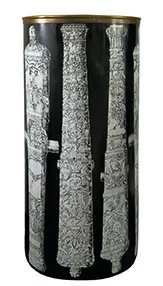Many subjects inspired the Italian designer Piero Fornasetti, from butterflies to buildings, musical instruments to harlequins. One of his recurring themes was the sun, and nowhere was this employed to greater effect than on his iconic Sole chair. The curvaceous piece, decorated with an anthropomorphised sun, was dreamt up in the early 1950s and still excites Fornasetti fans to this day.
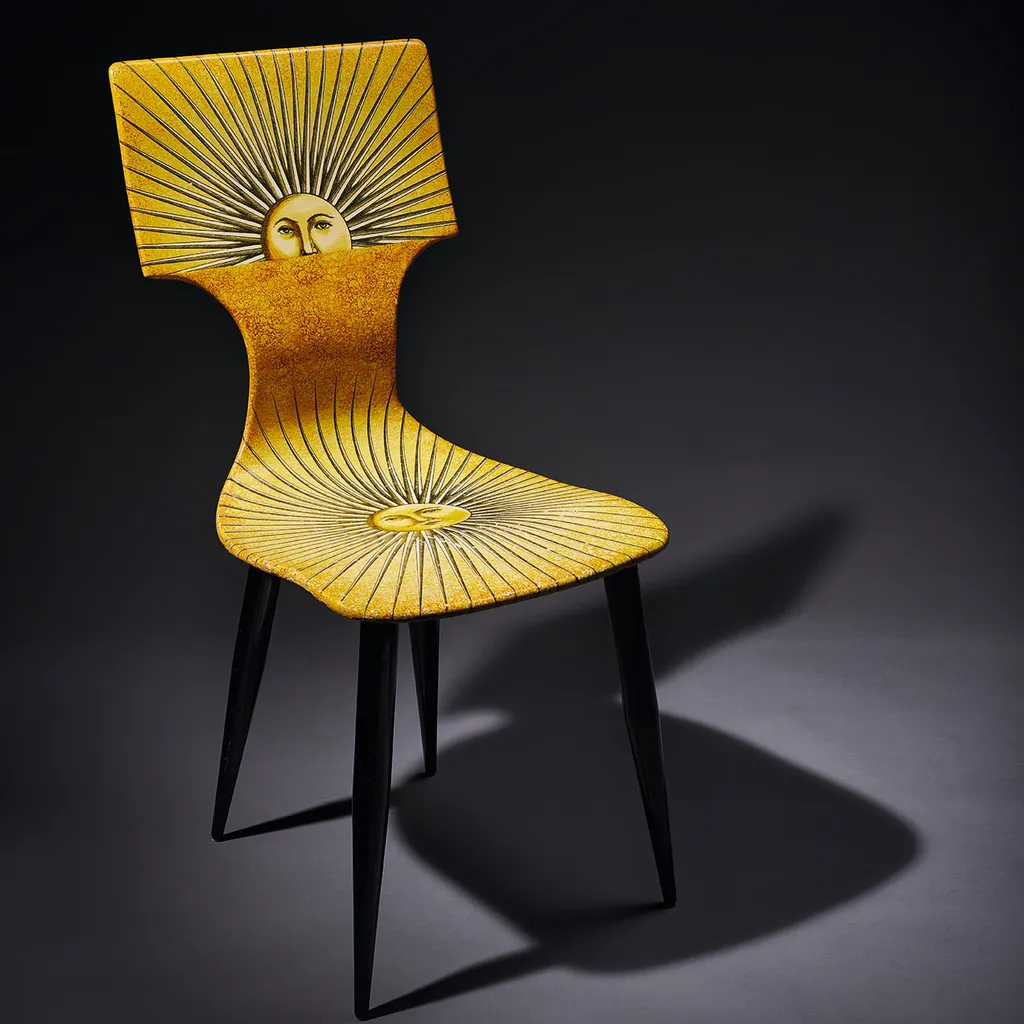
Celestial themes featured heavily in Piero Fornasetti’s work and the sun occupied a privileged position in his repertoire of natural forms. In the early 1940s, he designed a series of almanacs for the architect Gio Ponti, who encouraged the then-young artist to experiment with his artworks on furniture. This led to Fornasetti’s ergonomic, curved chair, an ideal platform for his imaginative patterns. He used a variety of motifs, but by far the most enduring was a sun (sole).

‘It’s a wonderful design,’ says antiques dealer Holly Johnson. ‘Fornasetti had a great sense of colour. The yellow is warm and orangey and brings emotions out in people.’
The Sole chair perfectly represents Fornasetti’s ability to take classical art and turn it into something timeless. His depiction of the sun has echoes of the Greek god Helios wearing his radiate crown.
‘The face is used on many different pieces,’ says Holly. ‘It is one full of character. I’ve been a dealer in Fornasetti for 20 years and this is definitely a favourite. It has those typical elements of his work – the fabulous classical design made so contemporary.’
The sun chair was produced in black and white as well as yellow mottled with ochre, and approximately 50 were made between the 1950s and 1980s. Since then it has been reissued by Fornasetti’s son, Barnaba.
You might also like:
Behind the name: The forming of Fornasetti
Piero Fornasetti was born in Milan in 1913 and, from an early age, he started to draw. Much to his accountant father’s displeasure, he yearned to be an artist and enrolled at Milan’s Brera Academy in 1930 to study drawing. He was expelled for insubordination in 1932 and instead taught himself lithography and etching. He spent days reading magazines and books on arts and science, and enrolled in night classes at Castello Sforzesco in Milan.
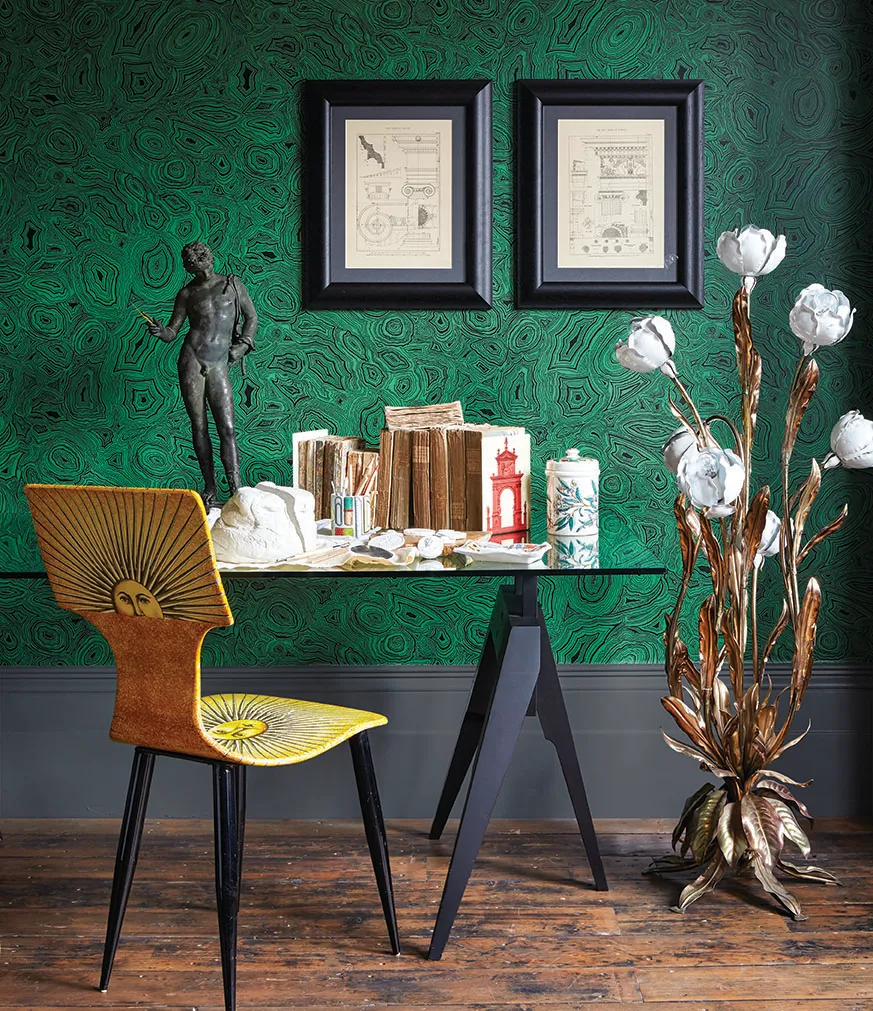
In 1933 he exhibited his first artwork at the University of Milan and produced a series of printed silk scarves that caught the eye of architect and designer Gio Ponti. The two men collaborated on various projects and combined Ponti’s signature angular forms with Fornasetti’s witty and whimsical motifs.
Fornasetti’s success reached its peak in the 1950s and, during this period, the artist created his Themes & Variations series, a collection of plates featuring his muse, the fin de siècle opera singer Lina Cavalieri, whose face he spotted in a magazine. He started painting her in 1952 and never stopped, creating a series of more than 350 pieces.
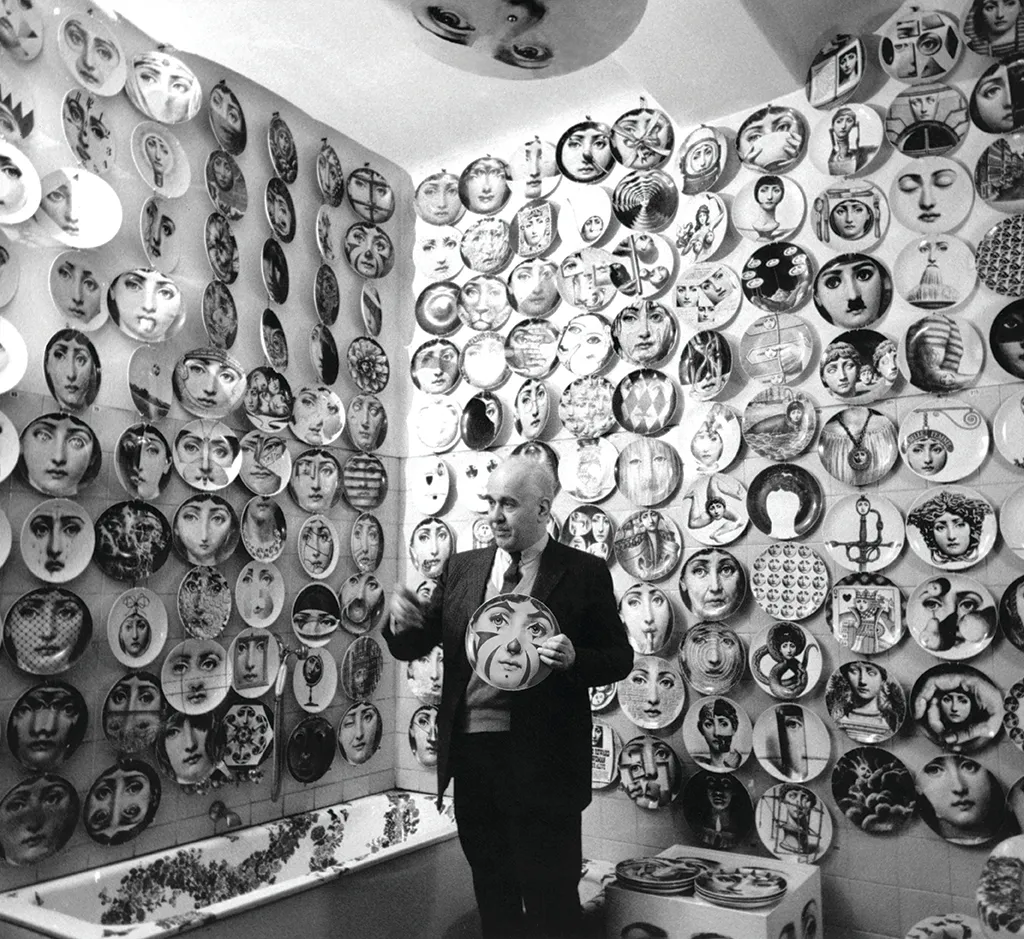
By the 1980s, popularity for Fornasetti’s bold patterns had waned and the company was struggling financially, but Liliane Fawcett helped to revive the brand when she opened her Notting Hill gallery in 1984, named Themes & Variations. Fornasetti died in 1988, having produced thousands of designs. His son, Barnaba, continues the atelier today, with limited-edition pieces and a range of home accessories using archive designs.
Fornasetti’s brilliant mind has inspired numerous designers over the decades, from Philippe Starck to Sue Timney.
What to look out for when buying an antique Fornasetti Sole chair
When buying a Fornasetti Sole chair, Holly Johnson says buyers must be careful they know which period they are buying, as the age of the chair hugely affects the price. ‘For instance, you could pay about £18,000 for a 1950s example and £5,000 for one made in the 1980s,’ she says. ‘The early ones are very hard to get hold of. Only an experienced Fornasetti dealer will be able to age the chair properly, as none of Piero’s works were marked with a date in his lifetime. A good dealer has a way of knowing what the date of a piece is.’
After taking on the business in 1988, Piero’s son Barnaba began to put dates on works produced by the atelier. A new sun chair issued by Fornasetti today will be about £3,500 and will be signed, numbered and dated. As with all old chairs, do check the piece is sturdy and in good condition, advises Holly. Since these are exceptionally high-quality items, it’s unlikely they will need repairs, but they are still designed to be used. Prices are still going up steadily for Fornasetti works as people become more familiar with the designs. ‘They are real collectors’ items,’ Holly adds. ‘Even new pieces are a good investment as the atelier limits how many are made. The price tends to escalate rather than drop.’
The evolution of Fornasetti
1951
The Architettura trumeau is one of Fornasetti’s most famous pieces. He collaborated with Gio Ponti on the original prototype.

1952
Fornasetti began his Tema e Variazioni series. He reimagined opera singer Lina Cavalieri’s face countless times in various guises.

1950
Fornasetti began making screens in the late 1940s. The screen Città di Carte (City of Cards) is one of his most famous.

1989
Barnaba’s teapot: in the book, Fornasetti, Philippe Starck describes it as ‘an open door through which one is immediately sucked.’
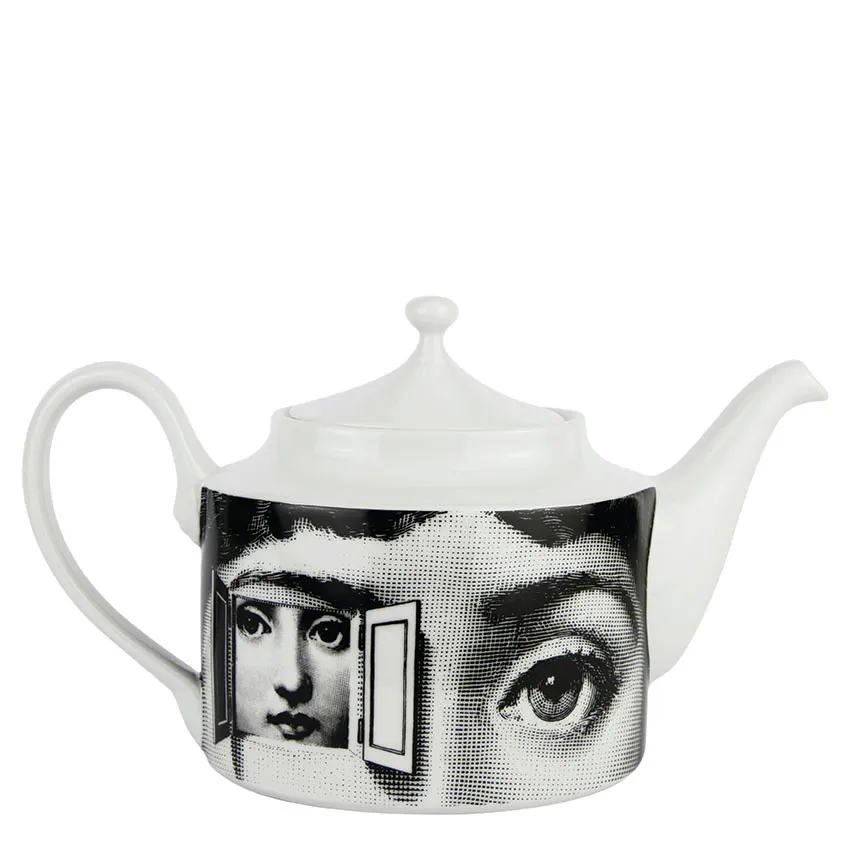
2003
The Zebra cabinet stands for what Barnaba terms ‘reinventions’ – new objects he’s designed using themes from the archive.
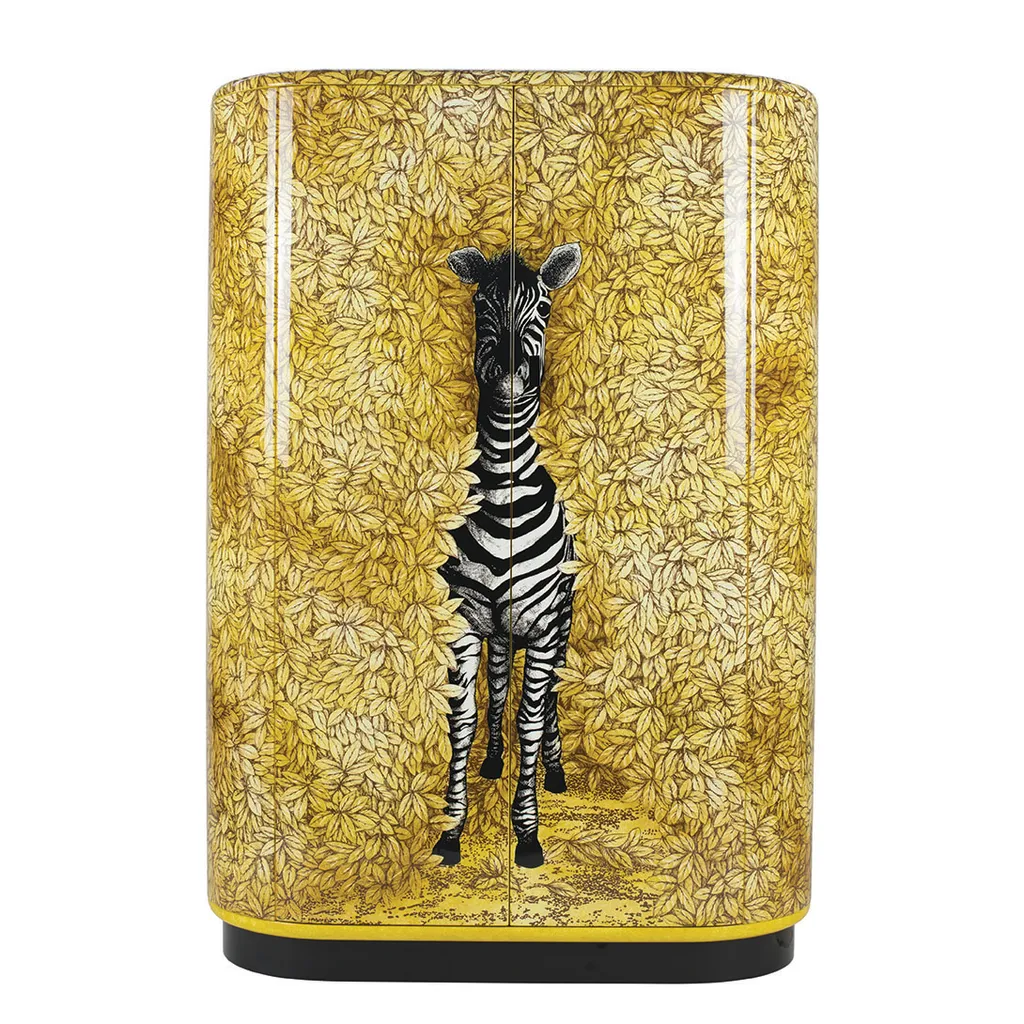
Shop the look: Old & new Fornasetti for your home
Piero Fornasetti Tea Centre Exhibition poster 1950s, £100, Themes & Variations.

Original Tema e Variazioni Fornasetti plate c1980, £550, Brownrigg
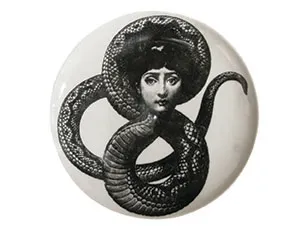
Sole milk jug, £225, Amara

Sardine silk reversible cushion, £179, Amara
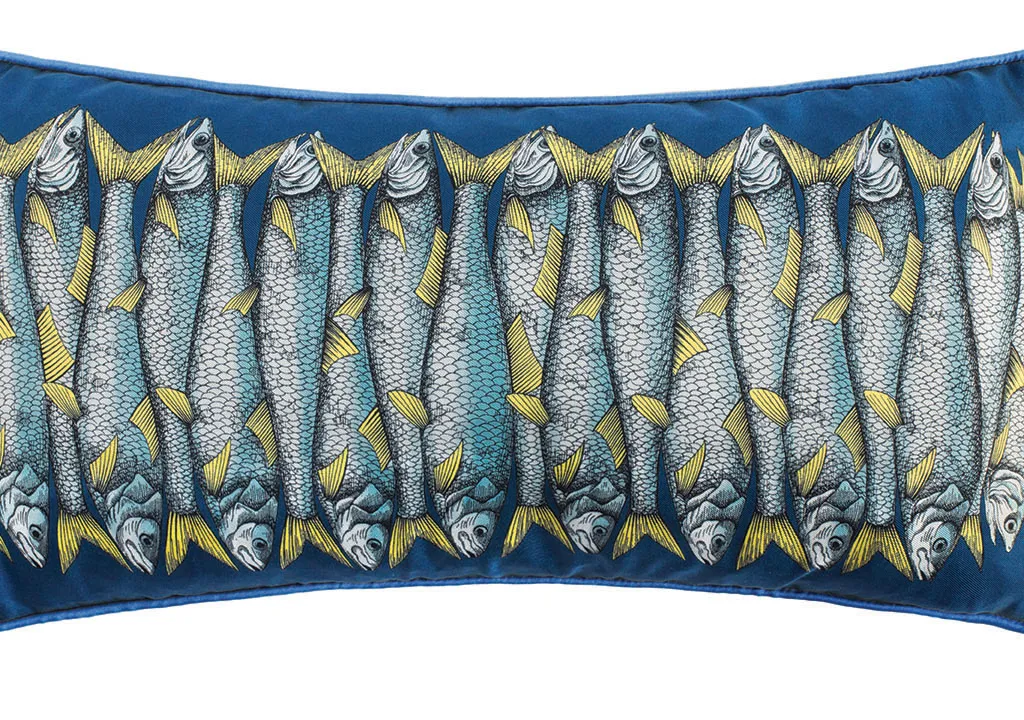
Piero Fornasetti magazine rack c1950, £3,800, 3 Details

Quattro Stagioni chair c1950, £5,500, Holly Johnson Antiques.

Cannoni Fornasetti umbrella stand 1950s£2,100, Moioli Gallery.
